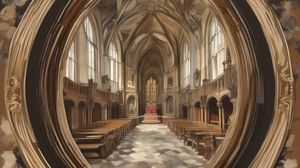
Sir Isaac Newton's Blue Plaque in the St James's area of London marks a building of historical significance, where the renowned physicist and mathematician resided during a pivotal period of his life. Newton is best known for his groundbreaking work in mathematics, physics, and astronomy, including the formulation of the laws of motion and universal gravitation, which revolutionized the scientific view of the universe.
This blue plaque acts as a tribute to Newton's immense contributions to science and academia and celebrates his time spent in London, where he developed many of his significant theories. For those passionate about the history of science, visiting this site provides a tangible connection to one of history's greatest minds.
It's fascinating to note that blue plaques in London are awarded by English Heritage to commemorate the link between a significant figure of the past and the building they once inhabited. The presence of a blue plaque dedicated to Newton is a testament to his lasting impact and his prominence in British history.
Sir Isaac Newton's time in London was not just about scientific pursuits; it also marked his involvement with the Royal Mint, where he served as Warden and later Master, working to reform the currency and combat counterfeiting. His residence close to St James's is a reminder of the breadth of his interests and influence beyond academia.
The geographical location of St James's, central to London's historic and cultural heart, reflects the significance of Newton's activities during the late 17th and early 18th centuries. During his time, he was among the intellectual elite that frequented this area, collaborating and debating with other leading figures of the Enlightenment era.

Making the Most of Your Visit:
Visit during quieter times in the morning or late afternoon to enjoy the moment to reflect on Newton's life without the hustle and bustle of the nearby streets.
While there, take a moment to imagine the history of the area during Newton's time. The nearby St James's Park is one of the city's oldest royal parks, and walking through it can give you a sense of the historic environment Newton might have experienced.
Snap a photo of the plaque, but also consider capturing the surrounding area to remember the juxtaposition of modern London with its historical roots.
If you're keen on Newton's contributions outside of academia, remember that his work with the Royal Mint took place nearby. Although not physically evident on your visit, this connection enriches the narrative of his time in the location.
Keep your eyes peeled for other blue plaques in the area. St James's is brimming with them, each telling the story of another influential figure who once called this historic part of London home.

Visiting Times & Costs:
Sir Isaac Newton's Blue Plaque in St James's is an outdoor historical marker accessible to the public at all times. There is no entrance fee, as it is part of the public streetscape.
The plaque itself does not have any specific accessibility issues, but please keep in mind that the area around St James's comprises busy streets, and some pavements may be narrow.
Visitors can enjoy viewing the plaque year-round, with the best times being quieter periods in the early morning or late afternoon for a more reflective experience.

Address & Map:

Nearby:























